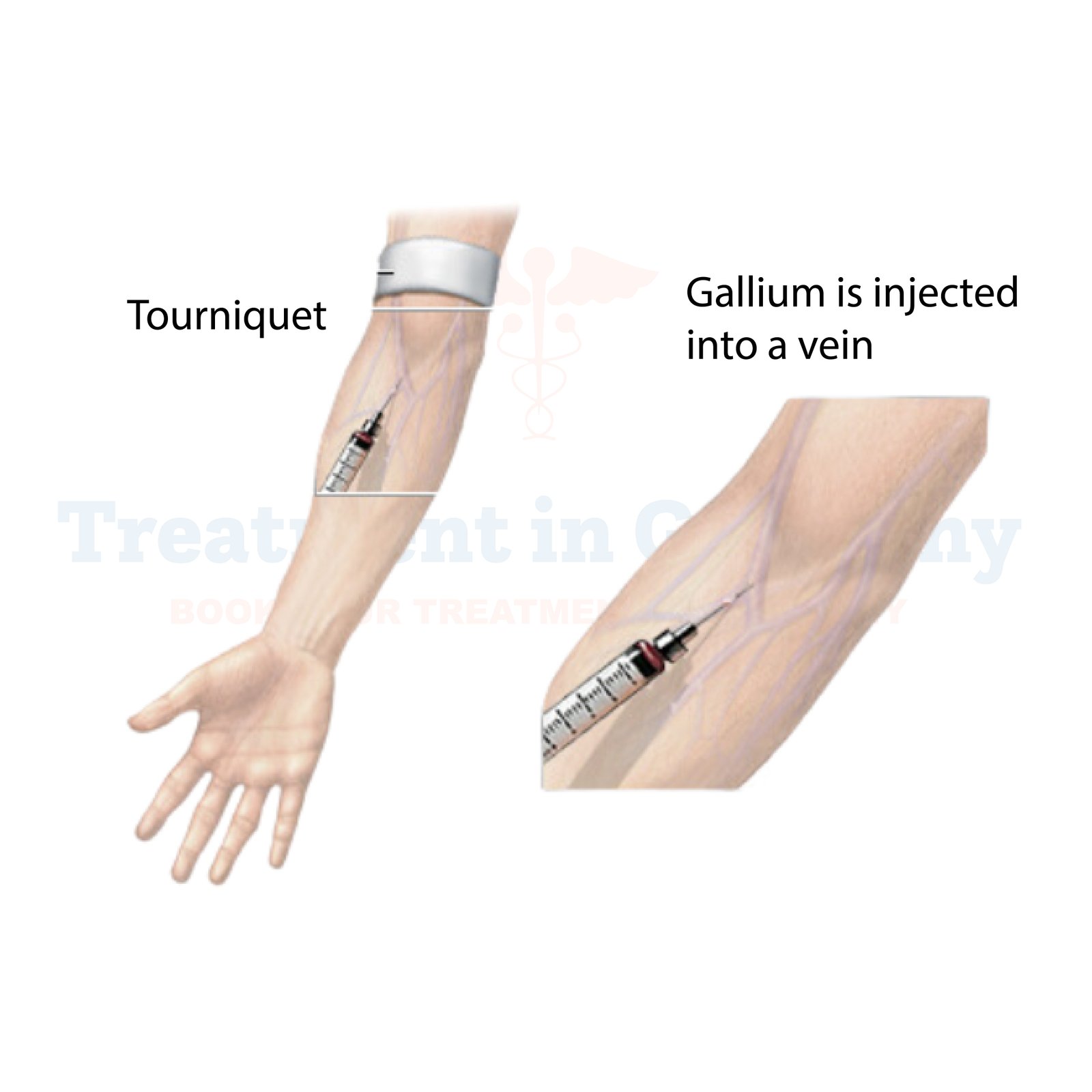Gallium scan treatment has been one of the most important diagnostic tools in the detection of various medical conditions, such as infections, inflammatory diseases, and some cancers. These scans produce detailed images through the use of radioactive gallium isotopes, helping doctors identify abnormalities such as Hodgkin lymphoma, osteomyelitis, and pulmonary fibrosis.
Germany is known for its advanced healthcare system, and many hospitals there offer innovative gallium scan treatments. This is an article that describes the process, uses, benefits, and safety considerations of a gallium scan in Germany.
A gallium scan is a form of nuclear imaging test where abnormal cells, infections, and inflammation are detected in the body. In the test, a tiny amount of radioactive gallium is injected into the blood vessels. Gallium then goes to areas that are more active in cellular processes, including infection sites and tumor cells, where the doctors can see and diagnose diseases that cannot be visualized through other methods.
This approach is rather innovative, especially when providing doctors with precise and targeted care in dealing with difficult conditions. In Germany, where the development of nuclear medicine is outstanding, gallium scans assess a wide range of disorders.
How Does It Work?
In a gallium scan, a radiologist injects a small amount of gallium, usually gallium-67 or gallium-68, into the vein. The gallium then circulates in the bloodstream and binds to particular proteins. Gallium tends to accumulate in areas where there is cell division or inflammation, thus making it possible to easily spot problem areas. A gamma camera is then used to take pictures of the body by capturing the radiation emitted by the gallium.
The gallium isotope possesses properties that are extremely useful for identifying problems to do with cellular activity. For instance, it has been very useful in highlighting inflammation or malignancy. Germany's hospitals make use of high-technology equipment to ensure that the images are clear, detailed, and accurate.
Applications of Gallium Scans in Germany
Gallium scans are applied in diagnosing most of the conditions listed below:
The integration of the scan into the health care system of Germany forms an integral part of a systematic approach towards diagnosis, whereby the health care providers attain precise information, thus bringing better patient outcomes.
Treatment Process for Gallium Scan
Pre-scan preparation for Gallium Scan
Patients generally do not need any significant preparation for a gallium scan, but pregnant or breastfeeding patients need to inform their doctor of these conditions since radiation could have adverse effects on a developing fetus or infant. Sometimes, a laxative is ordered so that the bowel is cleansed and the definition of images is improved.
Process Steps of a Gallium Scan
The best nuclear medicine experts team up with patients to ensure the process will be painless and comfy. The scan may also be repeated for several sessions just to monitor changes as well as to get proper images.
Follow-Up After a Gallium Scan
Patients are advised to get back to all daily activities right after performing the scan. Doctors advise their patients to take fluid enough so the radioactive gallium is eliminated by the body through the urinary and bowel systems as quickly as possible.
They also advise their patients on their hygiene. For example, if the patient goes to use the bathroom, they will make sure they go two times to ensure the residual radioactivity is expelled in the process.
Advantages of Gallium Scan Treatment in Germany
Germany is one of the countries with a state of the art approach toward nuclear medicine and diagnostics. Some of the advantages of gallium scans include:
Gallium scans are to be put to a very wide extent of utility during diagnosis and treatment processes wherein the patient is suffering from conditions such as sarcoidosis and pulmonary fibrosis. There may not exist adequate details which can be carried out with other image techniques.
Risk and Safety Measures with Gallium Scans:
Although gallium scans are considered to be relatively safe, there is still a risk of exposure to radiation, although minimal. The radiation applied for the gallium scan is similar to that applied during routine X-rays hence, it is not so dangerous. Pregnant and breastfeeding women are often discouraged from undergoing the test since the effects on the fetus or infant may be negative.
The patient can exhibit relatively minor side effects from these, such as nausea or skin rash. The majority of them are rare side effects. German hospitals detain the patients under full scrutiny; the doctors offering the process exercise the utmost care and, consequently, any associated risks during the treatment remain minimal.
Frequently Asked Questions
What conditions can a gallium scan diagnose?
An open-gallium scan has medical applications in treating and finding conditions that link up to cancer, infections, or inflammation, like conditions concerning Hodgkin's lymphoma, osteomyelitis, and sarcoidosis.
How long does gallium scanning take?
The scanning procedure is usually spread over a number of days where two or three visits have to be made for injections and imaging, and then the scan itself takes up about an hour per visit.
Is gallium scanning safe?
Gallium scans are generally safe with low radiation. Pregnant and breastfeeding females should discuss risks with their healthcare provider before undergoing this scan.
Why should I go for gallium scan treatment in Germany?
Germany is renowned for advanced medical practices, the latest nuclear medicine technology, and well-experienced radiologists who provide accurate diagnostic imaging in complicated cases.
Do I have to prepare for a gallium scan?
Preparation is minimal however, patients may need to take a laxative and avoid certain medications as prescribed by the radiologist.
👉 Contact us for further information and receive a complimentary consultation.

.webp)
.webp)
 (1).webp)
 (1).webp)

.webp)
.webp)
 (1).webp)
 (1).webp)
